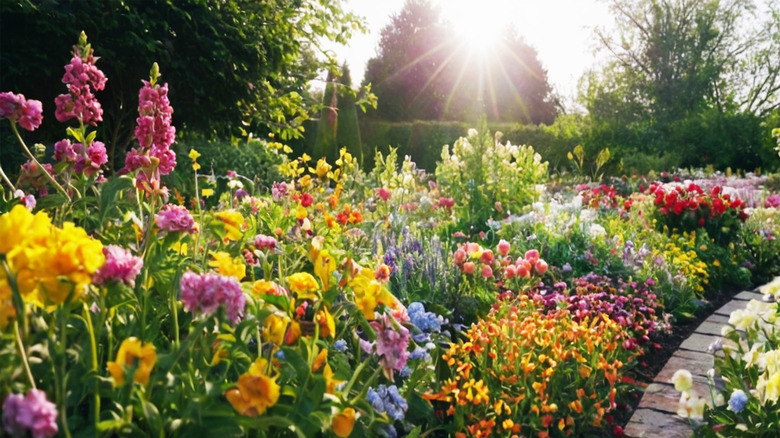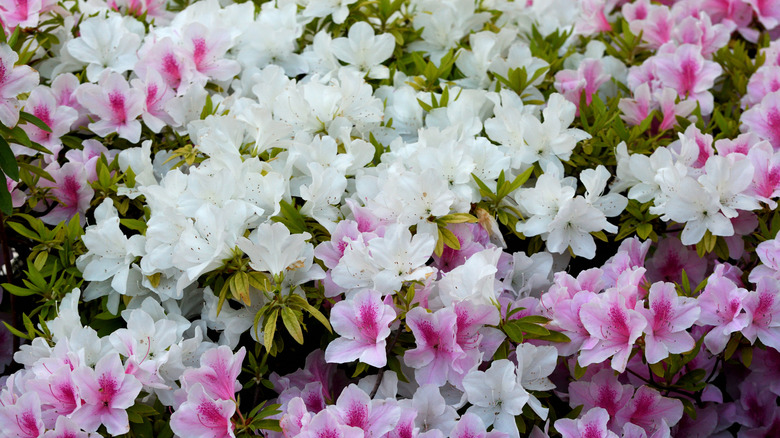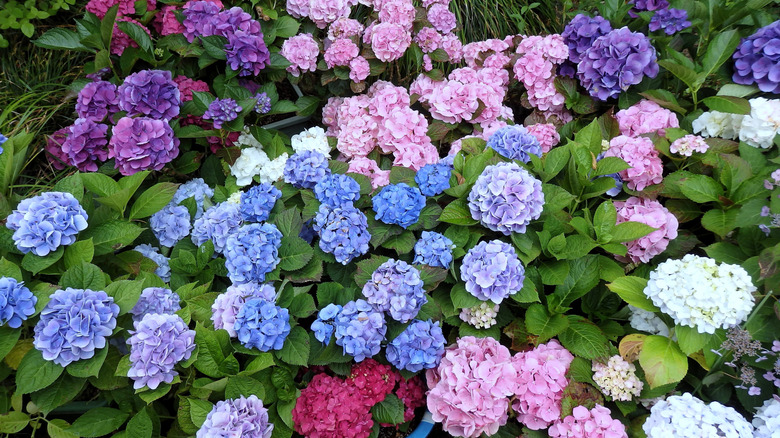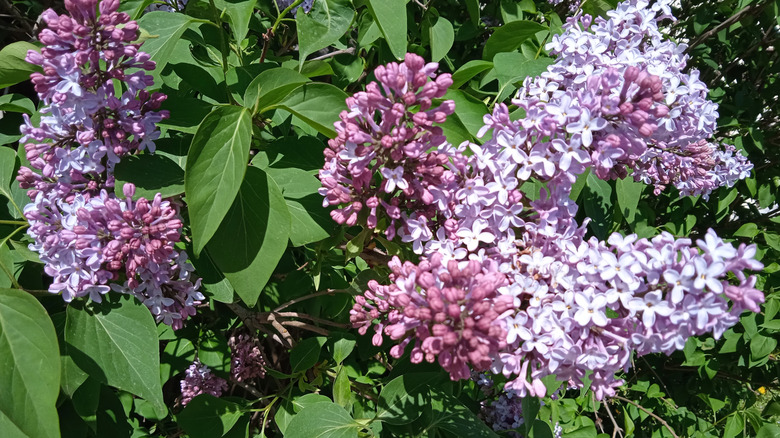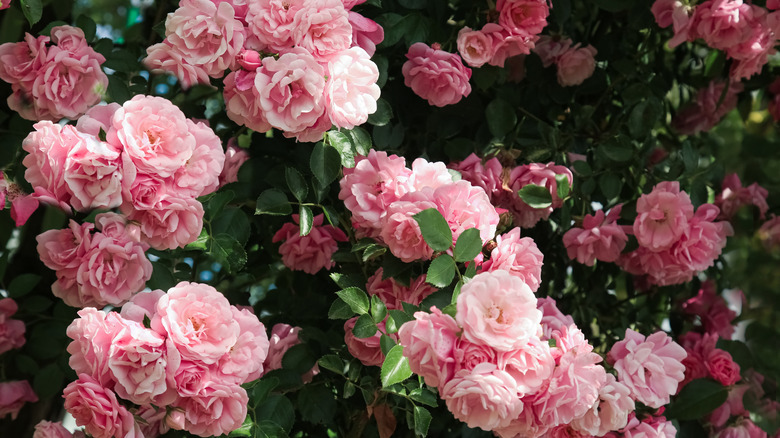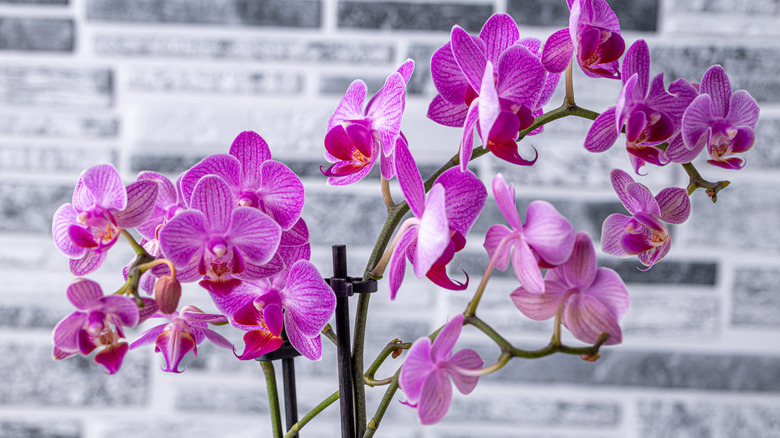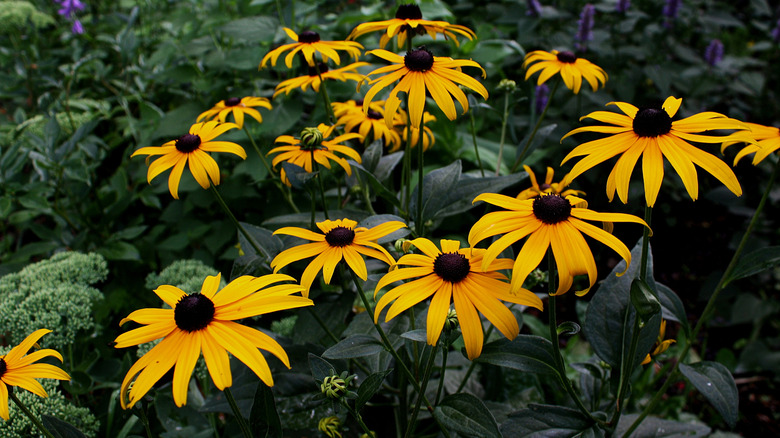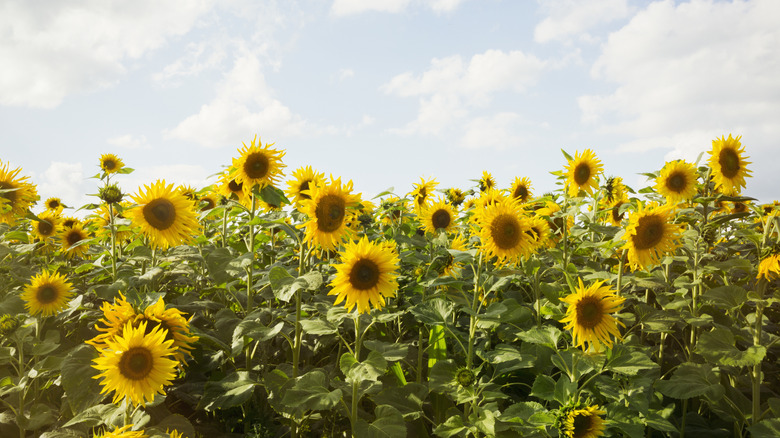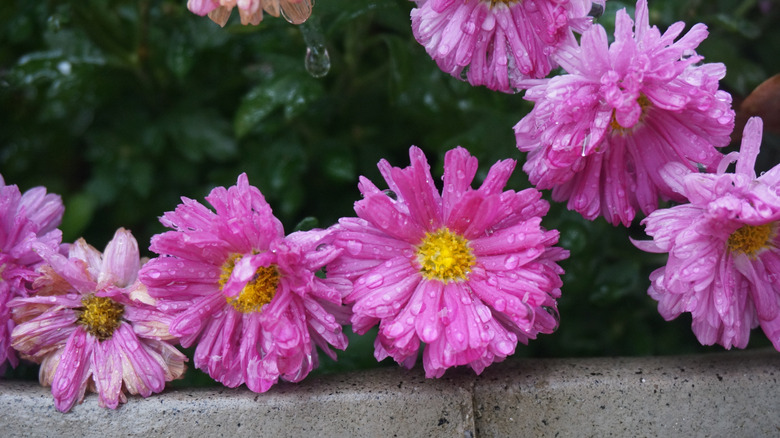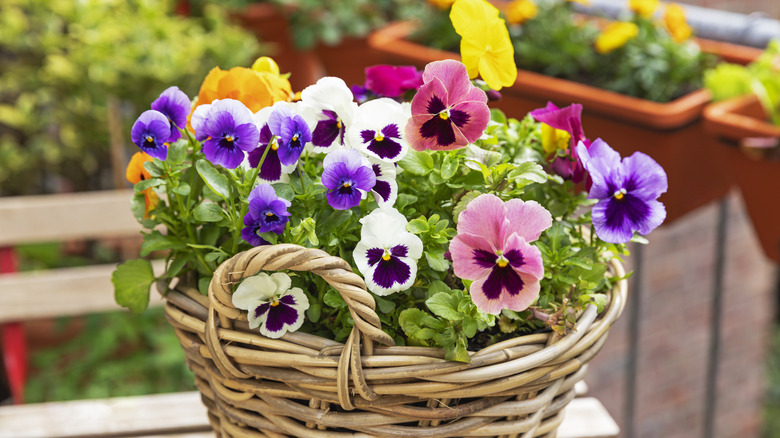10 Stunning Flowers That Are Easy To Propagate For A Garden Full Of Lasting Color
Propagating your own plants at home is a sustainable and cost-effective way to guarantee continued growth and bountiful gardens. From clippings of houseplants you can propagate in water to radiant flowers you started from seeds from your existing cultivars, the opportunities to nurture and establish young plants are abundant. But some plant species take better to propagation than others, and choosing the right flower to propagate can make or break the experience.
There are several methods of propagating flowers from your garden, but the most common one involves harvesting seeds from existing plants in your garden and growing the plant from scratch. However, you can also propagate by taking clippings of a plant's stem and stimulating new root growth. Which method you should try your hand at largely depends on which flower variety you're attempting to propagate, since different species have different needs and requirements.
Luckily, there are plenty of low-maintenance flowers that are suitable for beginners, so you can try your hand at propagation even if you don't have a green thumb. When filling up your garden with new flowering plants, it's smart to opt for species that will grow and multiply easily with minimal fuss. Here are 10 stunning flower varieties that are easy to propagate and can blanket your garden beds with perpetual blooms all season long.
Azaleas
Azalea (Rhododendron indicum) bushes are famous for their explosions of vibrant colors during the springtime, but they're also a great option for propagation. Azaleas have hardy stems that can handle be clipped in late spring and the early days of summer. You can multiply your azalea bushes by clipping hardened new growth from a strong, established plant, and transplanting it into a pot with well-drained soil. Keep the plant in a shaded area and give it adequate water and time to grow new roots.
Hydrangeas
Hydrangeas (Hydrangea macrophylla) are another type of flower that takes well to propagation. Hydrangea shrubs come in a wide array of colors and varieties and boast large bulbs of dense blossoms that are both vibrant and eye-catching. A popular method for propagating hydrangeas is the simple ground layering method which involves bending and burying an attached stem until new roots form. This method is ideal if you're only looking to propagate a few new plants near your existing hydrangea plants.
Lilacs
Lilac's (Syringa vulgaris) delicate purple petals can attract interest and evoke whimsy when planted in your home's flower beds. But outside of their beautiful blooms and fragrant aroma, lilacs can also be propagated using a simple and straightforward method. The most foolproof way to propagate lilacs is by digging out a root sucker that has started to sprout growth of its own and transplanting it to a bed of its own. Here you can nurture the young plant until it's fully established in its new home.
Dahlias
The dahlia is another flower that can be easily duplicated for your garden right at home. You can find dahlias in several different colors, and successful propagation can help paint your garden's landscape with a rainbow of varieties. The most popular way of propagating dahlias is by dividing the plant's tubers and starting them as new, individual plants. You can grow the tubers in shallower soil until the plant is established and ready to be transplanted into your garden.
Roses
Nothing brings an air of charm and romance to your home's garden quite like fresh roses (Rosa). You can propagate a rose cuttings indoors year-round by removing a clipping from a well-watered rose bush and placing it in water. After cutting it, store it in a vase out of direct sunlight for a propagation station that doubles as decor while you wait for the clipping to sprout roots. Once the cutting is ready to be transplanted, remove the flower bud and all but the top two leaves and plant into soil until the rose plant is sturdy and thriving.
Orchids
Propagating orchids (Cymbidium) can be simple thanks to the plant's unique anatomy. If you inspect the roots of an orchid plant, you'll find little bulbs or growth that are capable of growing into their own individual orchid plant. You can clip these young bulbs with gardening scissors and plant the divided growth into a small pot of its own out of direct sunlight. From here, orchid propagations are low maintenance and require occasional misting with water and time to flourish into an established flower.
Black-eyed susans
Black-eyed Susans (Rudbeckia hirta) are renowned for their striking appearance and long, delicate petals, and luckily, are extremely easy to propagate. The easiest way to start a new plant is by dividing the roots. At the plant's base you can gently separate small root clumps of growth, and plant them in shallower pots or trays until they establish. A flower garden full of black-eyed Susan plants is also likely to attract pollinators like bees and butterflies to your yard, which will encourage biodiversity.
Sunflowers
It's hard not to feel happy when looking at a sunflower's (Helianthus annuus) cheery blooms. These drought-tolerant flowers are extremely fast growers and can easily be propagated right at home during warmer months. If you have an older sunflower plant, you can harvest mature seeds by cutting off the top of the plant and shaking the seeds loose. Then you can plant them directly into your garden bed in a location that gets plenty of direct sunlight, which sunflowers need to thrive.
Chrysanthemums
Chrysanthemums are low-maintenance flowers that can illuminate your garden with their vast array of colors and species. But buying established chrysanthemums can get expensive, especially if you're looking to fill your garden with a rarer variety. Luckily, you can grow your own chrysanthemums with this clever cutting hack. Using a clipping to propagate your chrysanthemum flowers will yield the fastest results. You can transplant a cutting into moist, well-drained soil and wait for a few weeks until it's mature and established.
Pansies
A pansy (Viola x wittrockiana) is a charming flower with heart shaped petals and the ability to adapt to an array of growing conditions. You can propagate pansy plants from straight from seeds harvested from your other plants. Once you harvest your pansy seeds, plant them in shallow trays of well-watered, high-quality soil and keep them indoors and out of direct sunlight while they propagate. Give your pansy seeds a few weeks to properly germinate, then transplant them into your garden beds during the spring or fall.
